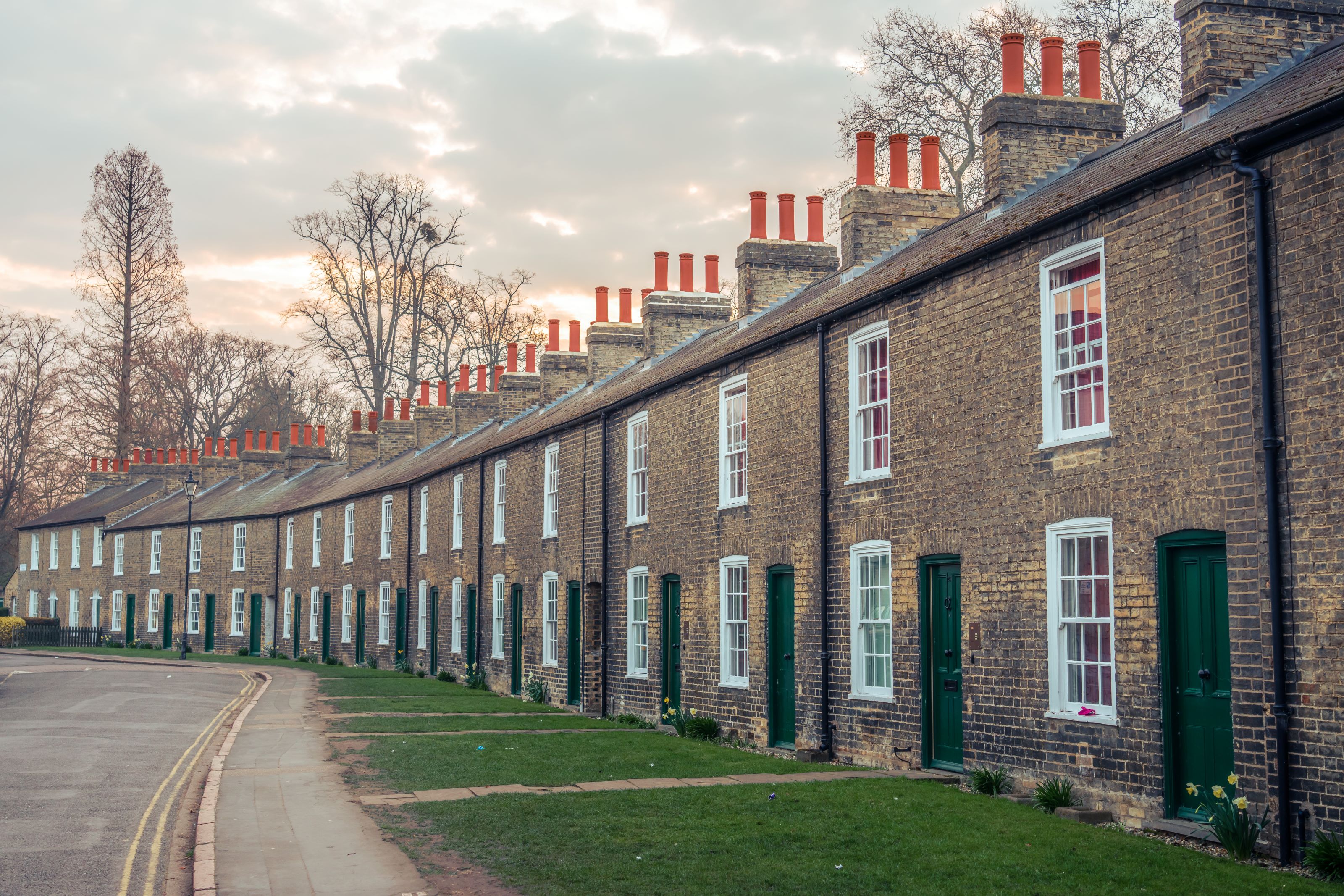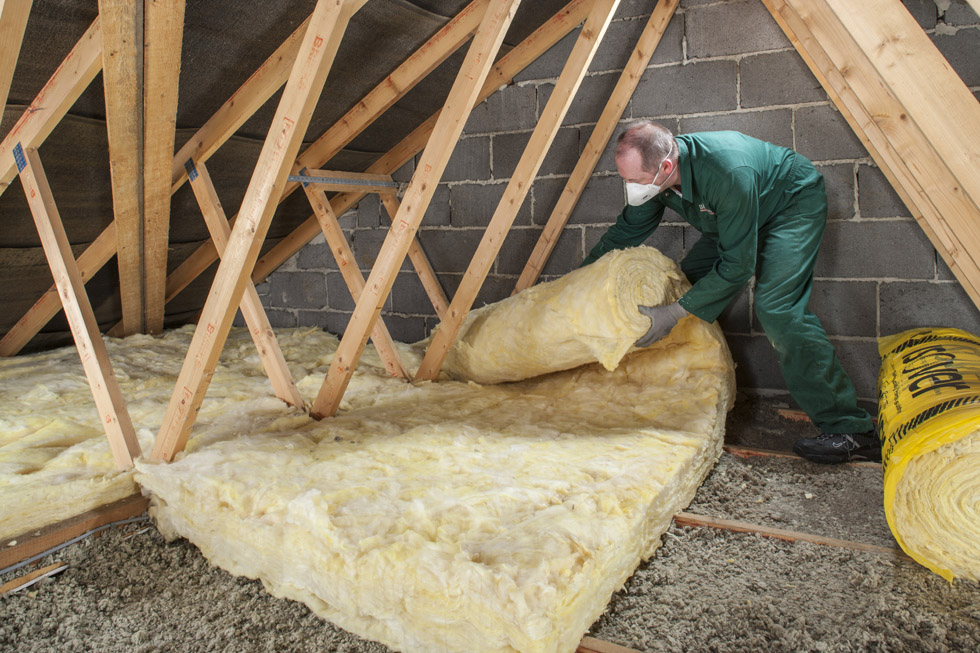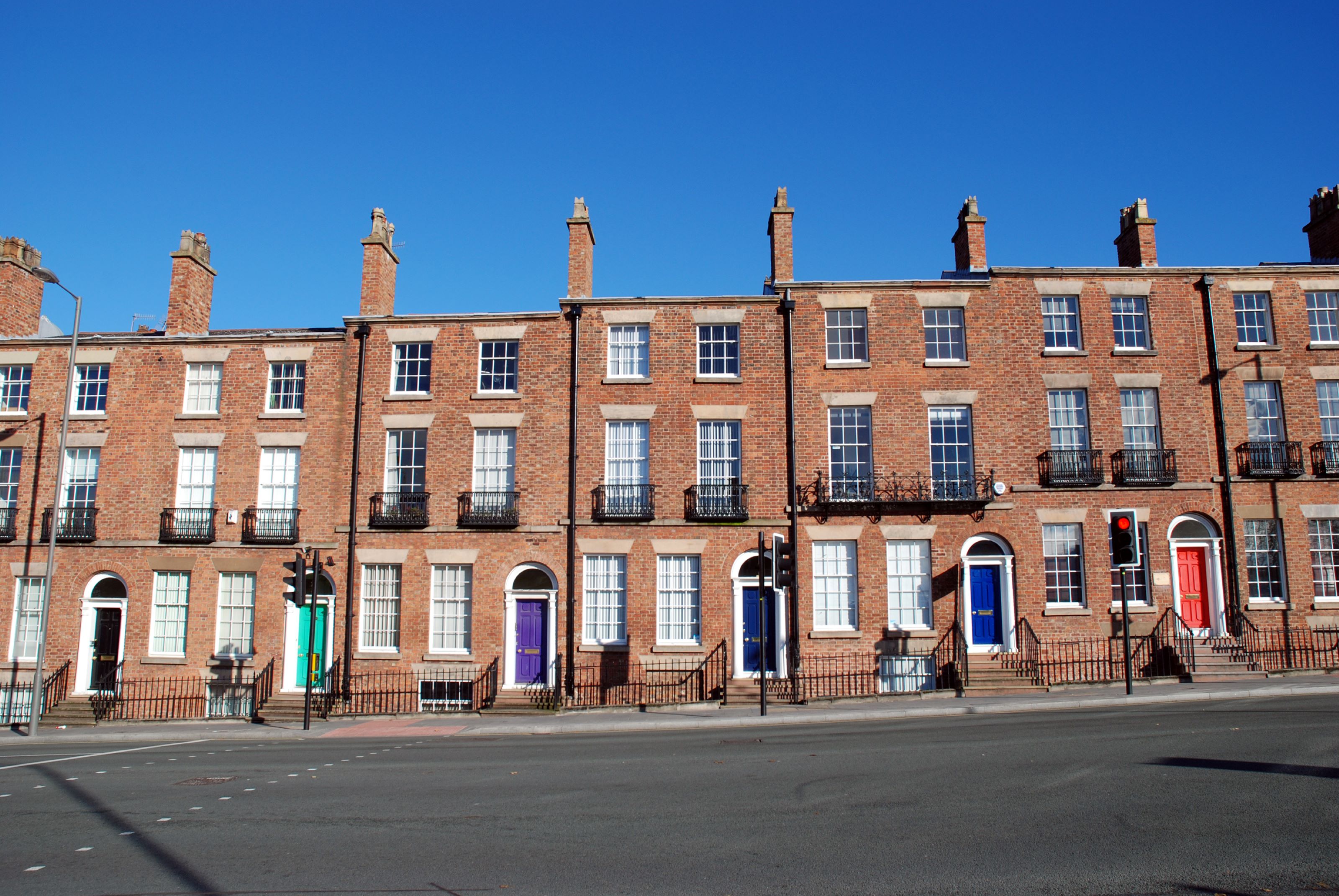How to improve the energy efficiency of a terrace house on any budget
While 19th century terrace houses aren't known for their energy efficiency, there are improvement you can make — whether you have a budget of £200 or £20k!

Up and down the UK are millions of 19th century terraces — and despite their rather chilly and draughty reputation, there’s plenty that can be done to reduce energy bills in this type of property.
We asked four building and energy experts for their energy-saving tips and suggestions: Marianne Suhr, a chartered building surveyor specialising in old homes and the co-author of Old House Eco Handbook published by Quarto Group; heating and energy expert David Hilton; Paul Ciniglio, refurbishment lead for the National Energy Foundation; and architect Paul Testa, who has a special interest in retrofitting homes.
We’ve assumed that the property is mid terrace, with gas central heating and 9-inch thick solid brick walls, and has had little or no energy efficiency or insulation measures.
Here's what the expert recommended on a range of budgets…
What can I do to improve energy efficiency with a £200 budget?
First the good news. “The great thing about a mid terrace is that you have very little external wall area to worry about. That means the heat loss is dramatically reduced,” says Marianne Suhr.
If you’ve up to £200 to spend, aim to reduce draughts on a DIY basis using products like draught proofing strips and brush strips, say the experts. “Check for draughts and airtightness, stopping draughts through letterboxes and fitting escutcheon plates over keyholes,” advises Marianne Suhr. “Airtightness is key. On a windy day walk round your house to get a feel for where the draughts are coming from.”
Insulating the loft is another vital step, and it should be possible to carry this out for £200, if it’s done on a DIY basis, says Paul Testa.
How can I improve my home's efficiency with £2,000?
If you don’t plan to insulate the loft yourself, and you have a budget of up to £2,000, the first task is to find a professional installer to install 270mm of mineral wool insulation in the loft for a cost of around £500.
That will save you £230 a year for a mid terraced home with gas central heating (based on fuel prices at April 2022).
If it’s simply a matter of topping up what insulation is already there – say from 120mm to 270mm, if it is in good condition – a professional installer will charge £400. You’ll save an extra £20 per year, based on April 2022 fuel prices.
“Any insulation must be vapour open and breathable, such as mineral wool or wood fibre boards, because of the nature of the building materials, as you don’t want to deteriorate the fabric of the building,” says David Hilton.
“With insulation comes responsibility for controlled home ventilation,” he adds. “Each property will be uniquely different based on occupancy, but make sure you are not increasing humidity levels.”

The next suggestion is from Marianne Suhr. “It’s very important to look at your windows, especially as terraces tend to have large sash windows,” she says. “If you have lovely old windows with handmade glass, they will be giving the house lots of character and to replace them would be a terrible shame.”
So instead, she advises, look for ways to introduce secondary glazing, which costs around £100 per square metre for the cheaper option of magnetic plastic panels, which can be taken away in the warmer months.
“If the terrace is on a busy road and the windows at the front are hardly ever open, then a toughened glass magnetic lift out system would be ideal. These can outperform double glazing if fitted well in terms of insulation, draught proofing and acoustic insulation, so there will be a reduction in traffic noise as well.
For rooms where windows are opened all year round, or provide fire escape, then an opening secondary system is required.
“And if money is short, add secondary glazing to the windows in the rooms that you heat the most — other rooms, such as a spare bedroom, can just be kept ticking over.”
How can I make improvements with a £20k budget?
For a more generous £20,000 budget Marianne recommends having a proper energy efficiency assessment carried out to get proper impartial advice.
The National Energy Foundation (NEF) for example, will carry out such an assessment – expect to pay around £500 – that will help you prioritise your budget and set out a phased plan that you can follow as time and budget allows.
Paul Ciniglio explains: “Every house is different, so it is definitely worth considering a proper assessment. For our assessments, a qualified retrofit coordinator would visit your house and draw up a plan to show where best to spend your money and what payback you can expect.”
It’s likely that the assessment will identify the key areas of windows, loft and floor insulation, and airtightness.
“None of these, as long as you consider ventilation as well as airtightness, should give any major moisture risk but they will deliver much greater comfort and reduced energy bills,” says Paul Testa.
Should homeowners consider insulating a wall? Possibly, say Paul Ciniglio and Marianne Suhr — but care is needed.
“External wall insulation is rarely suitable on a terrace row as it spoils the overall streetscape, and in a terraced house, the amount of heat lost through the bricks is a tiny amount compared to windows and doors,” explains Marianne.
“Internal wall insulation may be something to consider, but it can be fraught with difficulties and there are many cases of internal wall insulation carried out by non-specialists that now need to be stripped off because the work led to mould or trapped moisture. It can also cause a lot of damage to original features such as architraves, skirting boards and cornices.
“There are lots of extra costs here so never embark on unless you have specialist impartial advice.
“Concentrate on the quick wins with a terrace - the windows, airtightness, insulating a roof and the ground floor.”

What can I do with a budget of over £20,000?
For budgets over £20,000 consider adding renewable energy technologies and energy storage to the mix. With a tiny garden, which may be too small for an air source heat pump, it makes more sense to install solar panels on a south-facing roof, suggests Marianne Suhr.
An average solar PV array will cost around £6,500 or more with different annual savings of up to £500 a year, depending on factors such as whether the home is occupied during the day (the best case scenario) or evenings only.
Adds David Hilton: “Check how many panels you could put on your roof, as it may be quite a small area, and also look at regulating how you use your energy.”
To help with this, he suggests installing a thermal heat ‘battery’ at a cost of between £2,000 and £5,000. “The store is compact, so it would fit easily into a terrace. The energy stored could be used to heat your home and hot water using off peak electricity from the national grid as well as energy from your solar panels.”
Paul Ciniglio, David Hilton and Paul Testa will be speaking at the Homebuilding & Renovating Show in London from 30 September to 2 October.
Get the Homebuilding & Renovating Newsletter
Bring your dream home to life with expert advice, how to guides and design inspiration. Sign up for our newsletter and get two free tickets to a Homebuilding & Renovating Show near you.
Alison Wall is an experienced homes journalist, and former chief sub editor of Homebuilding & Renovating. She has interviewed countless self-builders and renovators regarding their projects, and has a special interest in eco builds. She is also renovating her 1970s home and garden, and has a particular interest in making her own home greener, having recently added solar panels, an EV chargepoint and a solar battery system.

